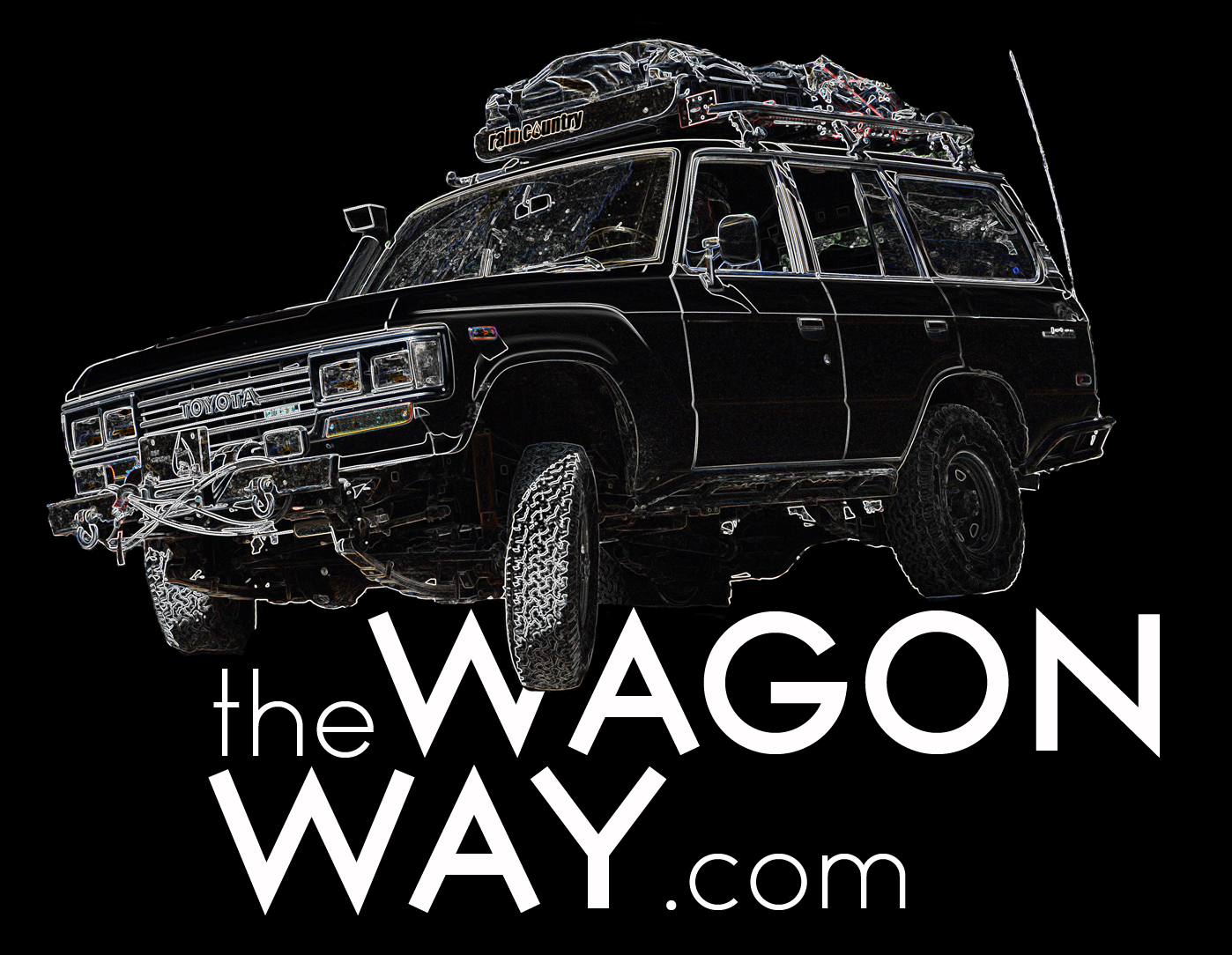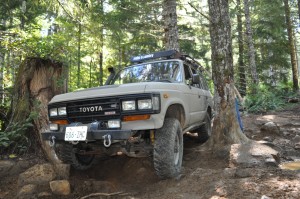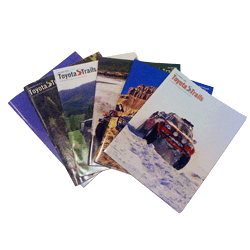When I first started taking on tougher wheeling I did what a lot of people do, I used the line of the rig in front of me. And lucky for me that was usually a wagon driven by Eric. All in all this was a great way to learn, mostly because Eric really knows where to put the wheels on his wagon.
Following a rig can make you look like a better driver than you might actually be. I can’t remember how many times I have watched a rig struggle its way past an obstacle and now having the benefit of their efforts and knowing what didn’t work, I can just drive right over it. In reality this has more to do with paying attention and watching another rig than my skills. You get to see what does or does not work before you set your tires in place. In a way you get to try the obstacle twice, while the guy in the lead doesn’t get that opportunity.
Following a rig is a good way to learn but only if that rig has a similar wheel base and track width. Taking the line of a 40 when you drive a wagon might get you stuck and maybe some new dents. While 40’s frequently just drive over obstacles my wagon needs to put the front wheels past them before turning to make sure the rear wheels will climb up or pivot around it.
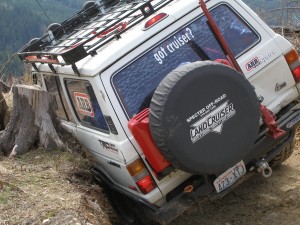 If you are going to watch and learn, be sure you know how the rig your watching is equipped. A rig with lockers and rock sliders can go over and around things in a manner that just may not be practical in an unlocked rig without any armor to protect the body. I use my sliders all the time to pivot on things not just as protection from an unintended mistake. I don’t know how many times I have made my spotter jump as I turned into a tree or rock to use my sliders to pivot around the obstacle. This trick is really good for getting that long overhang of my wagon (mostly the tail light) farther away from possible damage.
If you are going to watch and learn, be sure you know how the rig your watching is equipped. A rig with lockers and rock sliders can go over and around things in a manner that just may not be practical in an unlocked rig without any armor to protect the body. I use my sliders all the time to pivot on things not just as protection from an unintended mistake. I don’t know how many times I have made my spotter jump as I turned into a tree or rock to use my sliders to pivot around the obstacle. This trick is really good for getting that long overhang of my wagon (mostly the tail light) farther away from possible damage.
Wheelbase is another thing to consider if you are watching and learning. The long wheelbase of a wagon can definately make some obstacles look easy just due to the distance between the wheels. Steep climbs and descents are much more pleasant than doing this with a short wheelbase rig. That little hill that makes the 40 drivers nervous might be a little bump to a wagon. No feeling you are going to flip over forward or backward. But don’t get too cocky, just as often I am having to take two swipes at a turn when the 40 guys just drive around….
Following a rig is not always a sure fire way to find the best line to take. I have done a fair amount of damage this way. Mostly from unseen subtle changes in the line or not paying enough attention on my part. And this leads to the next stage, taking the lead… At some point in time you will either get tired of always following or your trail leader would like a break and want someone else to lead.
This is also a great way to learn and maybe the best way as well. At the very least it will teach you the longest lasting lessons. You don’t have anyone else to watch so you have to pick your own line. Not that big of a ![]() deal and yes you will pick the wrong one now and again (or at least I still do). And just because you are picking the line doesn’t mean you have to go it alone, never hesitate to ask for a spotter if you think you need or want one.
deal and yes you will pick the wrong one now and again (or at least I still do). And just because you are picking the line doesn’t mean you have to go it alone, never hesitate to ask for a spotter if you think you need or want one.
While responsibility for your rig ultimately comes down to you, always pay attention to your spotter. They can see things you can’t. But frequently they don’t know as much about your rig as you do. In this case they are more valuable as eyes outside the rig versus giving advice on how to get over something. There is no reason not to ask a spotter to watch something specific on your rig, such as the diff or the rear quarter, as you try to get over something. This has become a common occurence for me as I get to know my rig better and gain confidence.
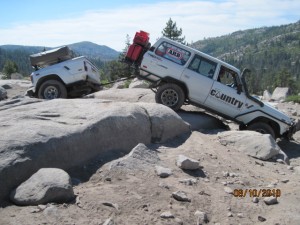 The overhang on our wagons tends to bang and smash alot and your spotter will have to get used to this. I know the sounds from the back of my wagon coming off obstacles makes the guys I wheel with cringe everytime they hear it. But at this point I know the sounds my quarter guards and bumper make compared to the cereal box crunch of sheetmetal and a tail light.
The overhang on our wagons tends to bang and smash alot and your spotter will have to get used to this. I know the sounds from the back of my wagon coming off obstacles makes the guys I wheel with cringe everytime they hear it. But at this point I know the sounds my quarter guards and bumper make compared to the cereal box crunch of sheetmetal and a tail light.
And another thing to consider about spotters, when you are trying to get through a tough spot there are usually more than one pair of eyes on your rig. While this is definately helpful, be sure that everyone knows who your spotter is. And if they see something they should talk to your spotter not to you. This helps avoid confusion. Learning to pick and trust your spotter are valuble skills. And you need to have total confidence in your spotter or you just may end up stuck.
Picking lines can be fun and it’s really great when you pick a line that your buddies don’t think will work for your rig. Driving right through a tough spot comes with time and experience, both from following and leading. Don’t be afraid to do either.
